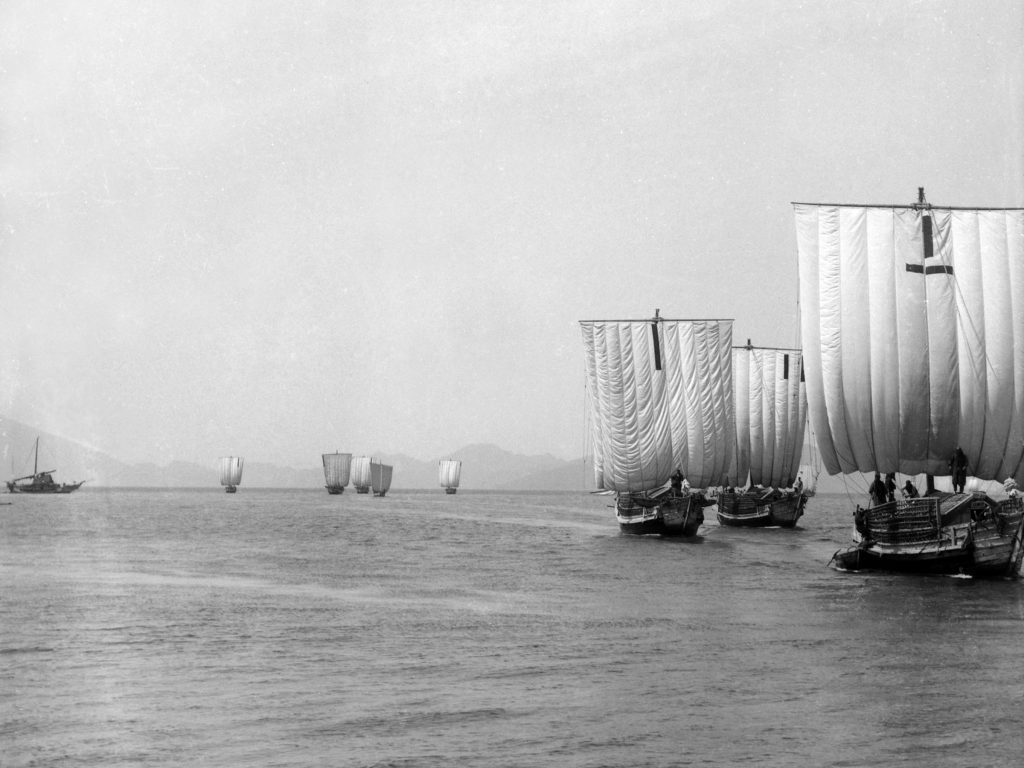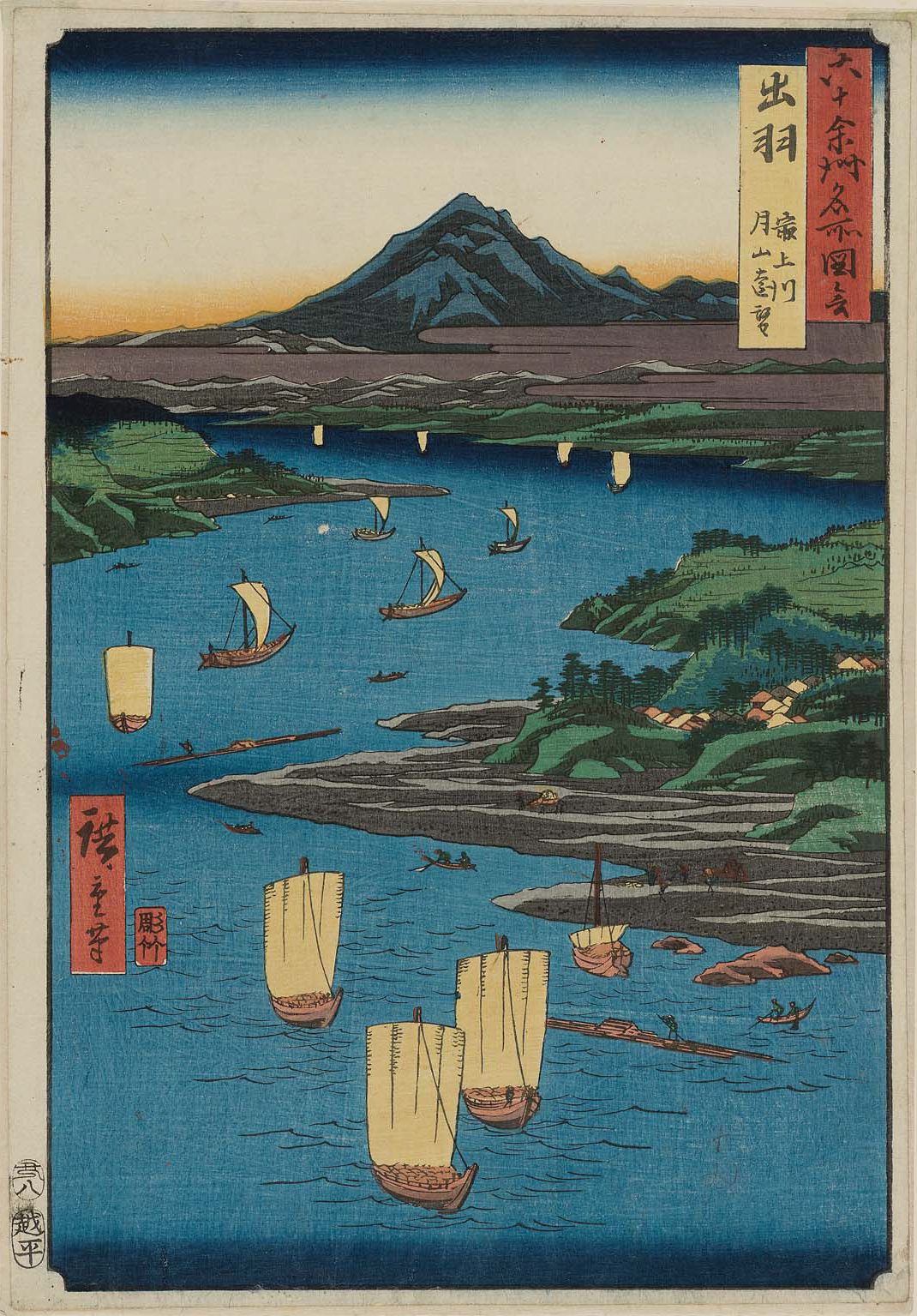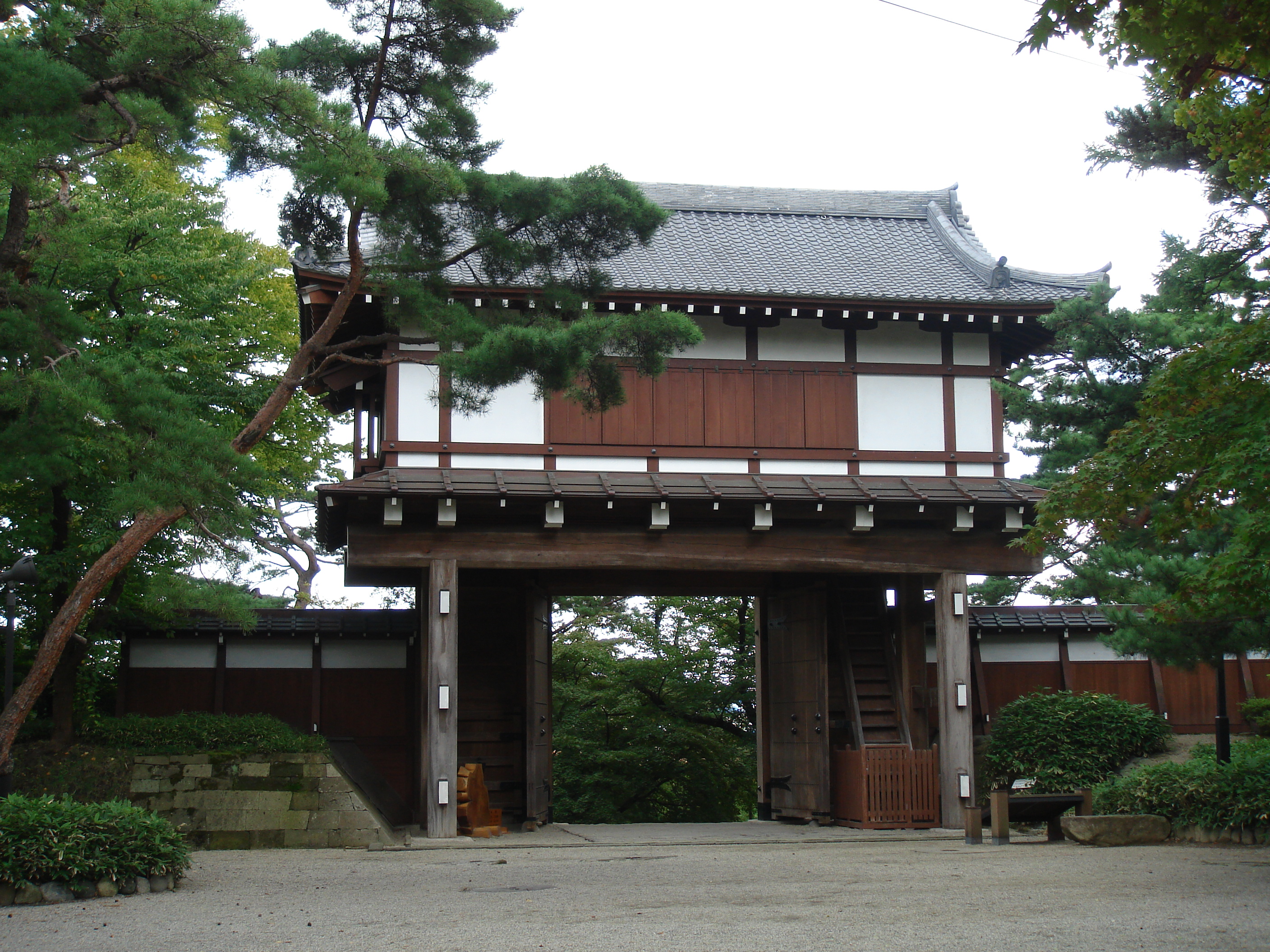|
Port Of Noshiro
The is a seaport on the Sea of Japan coast of Akita Prefecture, in the city of Noshiro in the Tōhoku region of northern Honshū, Japan. It is classified as a by the Japanese government. The port has a total land area of 276 hectares. History Per the '' Nihon Shoki'' and other ancient chronicles, Noshiro is the location where an expedition sent by the Yamato Court led by Abe no Hirafu landed in 658 AD with orders to force the local Emishi tribes into submission. Trade vessels from Balhae were calling at Noshiro Port as late as 771 AD. During the Edo period, Noshiro port was an important port of call on the Kitamaebune route of coastal trade from Osaka to Hokkaido and an important source of revenue for the Satake clan’s Kubota Domain based at nearby Akita, who exported lumber from the clans holdings in Dewa Province. In modern times, the port declined in importance after the Meiji period as silting made the port unusable for larger vessels, despite its status as a “designate ... [...More Info...] [...Related Items...] OR: [Wikipedia] [Google] [Baidu] |
Seaport
A port is a maritime facility comprising one or more wharves or loading areas, where ships load and discharge cargo and passengers. Although usually situated on a sea coast or estuary, ports can also be found far inland, such as Hamburg, Manchester and Duluth; these access the sea via rivers or canals. Because of their roles as ports of entry for immigrants as well as soldiers in wartime, many port cities have experienced dramatic multi-ethnic and multicultural changes throughout their histories. Ports are extremely important to the global economy; 70% of global merchandise trade by value passes through a port. For this reason, ports are also often densely populated settlements that provide the labor for processing and handling goods and related services for the ports. Today by far the greatest growth in port development is in Asia, the continent with some of the world's largest and busiest ports, such as Singapore and the Chinese ports of Shanghai and Ningbo-Zhou ... [...More Info...] [...Related Items...] OR: [Wikipedia] [Google] [Baidu] |
Kitamaebune
The was a shipping route (and also the ships involved) in Japan from the Edo period to the Meiji era. The route went from Osaka through the Seto Inland Sea and the Kanmon Straits to ports in Hokuriku on the Sea of Japan and later to Hokkaidō. Kaga Domain, which sold about 70,000 ''koku'' of rice every year in Osaka, succeeded in sending 100 ''koku'' by boat through this route in 1639. The Tokugawa shogunate also received rice from Dewa Province through merchant Kawamura Zuiken in 1672, but it is thought to be a response from these ships. Japanese ships at the time normally could make only one trip per year, but with the arrival of Western schooners in the Meiji era, ships were able to make up to four trips annually. The Meiji Restoration also brought the end of the feudal system and the introduction of the telegraph, removing gaps between regional markets and making it difficult for the shipping routes to make large profits. The national construction of railroads further led ... [...More Info...] [...Related Items...] OR: [Wikipedia] [Google] [Baidu] |
Ports And Harbors Of Japan
A port is a maritime facility comprising one or more wharves or loading areas, where ships load and discharge cargo and passengers. Although usually situated on a sea coast or estuary, ports can also be found far inland, such as Hamburg, Manchester and Duluth; these access the sea via rivers or canals. Because of their roles as ports of entry for immigrants as well as soldiers in wartime, many port cities have experienced dramatic multi-ethnic and multicultural changes throughout their histories. Ports are extremely important to the global economy; 70% of global merchandise trade by value passes through a port. For this reason, ports are also often densely populated settlements that provide the labor for processing and handling goods and related services for the ports. Today by far the greatest growth in port development is in Asia, the continent with some of the world's largest and busiest ports, such as Singapore and the Chinese ports of Shanghai and Ningbo-Zho ... [...More Info...] [...Related Items...] OR: [Wikipedia] [Google] [Baidu] |
Transport In Akita Prefecture
Transport (in British English), or transportation (in American English), is the intentional movement of humans, animals, and goods from one location to another. Modes of transport include air, land (rail and road), water, cable, pipeline, and space. The field can be divided into infrastructure, vehicles, and operations. Transport enables human trade, which is essential for the development of civilizations. Transport infrastructure consists of both fixed installations, including roads, railways, airways, waterways, canals, and pipelines, and terminals such as airports, railway stations, bus stations, warehouses, trucking terminals, refueling depots (including fueling docks and fuel stations), and seaports. Terminals may be used both for interchange of passengers and cargo and for maintenance. Means of transport are any of the different kinds of transport facilities used to carry people or cargo. They may include vehicles, riding animals, and pack animals. Vehicles may inclu ... [...More Info...] [...Related Items...] OR: [Wikipedia] [Google] [Baidu] |
Scrap Metal
Scrap consists of recyclable materials, usually metals, left over from product manufacturing and consumption, such as parts of vehicles, building supplies, and surplus materials. Unlike waste, scrap has monetary value, especially recovered metals, and non-metallic materials are also recovered for recycling. Once collected, the materials are sorted into types — typically metal scrap will be crushed, shredded, and sorted using mechanical processes. Scrap recycling is important for creating a more sustainable economy or creating a circular economy, using significantly less energy and having far less environmental impact than producing metal from ore. Metal recycling, especially of structural steel, ships, used manufactured goods, such as vehicles and white goods, is a major industrial activity with complex networks of wrecking yards, sorting facilities and recycling plants. Processing Scrap metal originates both in business and residential environments. Typically a "scrapper" ... [...More Info...] [...Related Items...] OR: [Wikipedia] [Google] [Baidu] |
World War II
World War II or the Second World War, often abbreviated as WWII or WW2, was a world war that lasted from 1939 to 1945. It involved the vast majority of the world's countries—including all of the great powers—forming two opposing military alliances: the Allies and the Axis powers. World War II was a total war that directly involved more than 100 million personnel from more than 30 countries. The major participants in the war threw their entire economic, industrial, and scientific capabilities behind the war effort, blurring the distinction between civilian and military resources. Aircraft played a major role in the conflict, enabling the strategic bombing of population centres and deploying the only two nuclear weapons ever used in war. World War II was by far the deadliest conflict in human history; it resulted in 70 to 85 million fatalities, mostly among civilians. Tens of millions died due to genocides (including the Holocaust), starvation, ma ... [...More Info...] [...Related Items...] OR: [Wikipedia] [Google] [Baidu] |
Meiji Period
The is an era of Japanese history that extended from October 23, 1868 to July 30, 1912. The Meiji era was the first half of the Empire of Japan, when the Japanese people moved from being an isolated feudal society at risk of colonization by Western powers to the new paradigm of a modern, industrialized nation state and emergent great power, influenced by Western scientific, technological, philosophical, political, legal, and aesthetic ideas. As a result of such wholesale adoption of radically different ideas, the changes to Japan were profound, and affected its social structure, internal politics, economy, military, and foreign relations. The period corresponded to the reign of Emperor Meiji. It was preceded by the Keiō era and was succeeded by the Taishō era, upon the accession of Emperor Taishō. The rapid modernization during the Meiji era was not without its opponents, as the rapid changes to society caused many disaffected traditionalists from the former samurai ... [...More Info...] [...Related Items...] OR: [Wikipedia] [Google] [Baidu] |
Dewa Province
was a province of Japan comprising modern-day Yamagata Prefecture and Akita Prefecture, except for the city of Kazuno and the town of Kosaka. Dewa bordered on Mutsu and Echigō Provinces. Its abbreviated form name was . History Early period Prior to the Asuka period, Dewa was inhabited by Ainu or Emishi tribes, and was effectively outside of the control of the Yamato dynasty. Abe no Hirafu conquered the native Emishi tribes at what are now the cities of Akita and Noshiro in 658 and established a fort on the Mogami River. In 708 AD was created within Echigō Province. The area of Dewa District was roughly that of the modern Shōnai area of Yamagata Prefecture, and was gradually extended to the north as the Japanese pushed back the indigenous people of northern Honshū. Dewa District was promoted to the status of a province () in 712 AD, and gained Okitama and Mogami Districts, formerly part of Mutsu Province. A number of military expeditions were sent to the area, with ar ... [...More Info...] [...Related Items...] OR: [Wikipedia] [Google] [Baidu] |
Akita, Akita
'Autumn field' is the capital Cities of Japan, city of Akita Prefecture, Japan, and has been designated a Core cities of Japan, core city since 1 April 1997. , the city has an estimated population of 305,625, 136,628 households and a population density of 340 persons per km2. The total area of the city is . History The area of present-day Akita was part of ancient Dewa Province, and has been inhabited for thousands of years. The Jizōden Site, Jizōden ruins within the city limits are a major archaeological site with artifacts from the Japanese Paleolithic period through the Jōmon period, Jōmon and Yayoi periods. During the Nara period, the Yamato dynasty, Yamato court established Akita Castle in 733 AD to bring the local Emishi tribes under its control. The area was ruled by a succession of local samurai clans in the Sengoku period, before coming under the control of the Satake clan of Kubota Domain during the Edo period. Under the Tokugawa shogunate, a castle town developed ar ... [...More Info...] [...Related Items...] OR: [Wikipedia] [Google] [Baidu] |
Kubota Domain
was a feudal domain in Edo period Japan, located in Dewa Province (modern-day Akita Prefecture), Japan. It was centered on Kubota Castle in what is now the city of Akita and was thus also known as the . It was governed for the whole of its history by the Satake clan. During its rule over Kubota, the Satake clan was ranked as a family, and as such, had the privilege of shogunal audiences in the Great Hall (''Ohiroma'') of Edo Castle. In the Boshin War of 1868–69, the domain joined the Ōuetsu Reppan Dōmei, the alliance of northern domains supporting the Tokugawa shogunate, but then later defected to the imperial side. As with all other domains, it was disbanded in 1871. History The Satake clan was a powerful samurai clan, who ruled Hitachi Province from the late Heian period through the end of the Sengoku period. In 1600, the Satake sided with the pro-Toyotomi cause at the Battle of Sekigahara.Saga, ''Memories of Silk and Straw'', pp. 16-17. After the defeat of the pro-Toyo ... [...More Info...] [...Related Items...] OR: [Wikipedia] [Google] [Baidu] |
Satake Clan
The was a Japanese samurai clan that claimed descent from the Minamoto clan. Its first power base was in Hitachi Province. The clan was subdued by Minamoto no Yoritomo in the late 12th century, but later entered Yoritomo's service as vassals. In the Muromachi period, the Satake served as Governor (''shugo'') of Hitachi Province (today Ibaraki Prefecture), under the aegis of the Ashikaga shogunate. The clan sided with the Western Army during the Battle of Sekigahara, and was punished by Tokugawa Ieyasu, who moved it to a smaller territory in northern Dewa Province (northern Honshū) at the start of the Edo period. The Satake survived as lords (daimyō) of the Kubota Domain (also known as the Akita Domain). Over the course of the Edo period, two major branches of the Satake clan were established, one ruled the fief of Iwasaki, the other one the fief of Kubota-Shinden. During the Boshin War of 1868–69, the Satake were signatories to the pact that formed the Ōuetsu Reppan Dōm ... [...More Info...] [...Related Items...] OR: [Wikipedia] [Google] [Baidu] |
Hokkaido
is Japan's second largest island and comprises the largest and northernmost prefecture, making up its own region. The Tsugaru Strait separates Hokkaidō from Honshu; the two islands are connected by the undersea railway Seikan Tunnel. The largest city on Hokkaidō is its capital, Sapporo, which is also its only ordinance-designated city. Sakhalin lies about 43 kilometers (26 mi) to the north of Hokkaidō, and to the east and northeast are the Kuril Islands, which are administered by Russia, though the four most southerly are claimed by Japan. Hokkaidō was formerly known as ''Ezo'', ''Yezo'', ''Yeso'', or ''Yesso''. Nussbaum, Louis-Frédéric. (2005). "Hokkaidō" in Although there were Japanese settlers who ruled the southern tip of the island since the 16th century, Hokkaido was considered foreign territory that was inhabited by the indigenous people of the island, known as the Ainu people. While geographers such as Mogami Tokunai and Mamiya Rinzō explored the isla ... [...More Info...] [...Related Items...] OR: [Wikipedia] [Google] [Baidu] |










